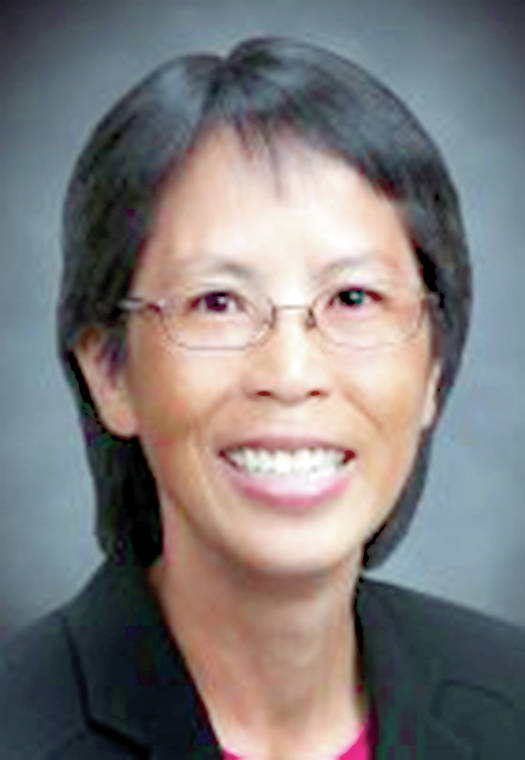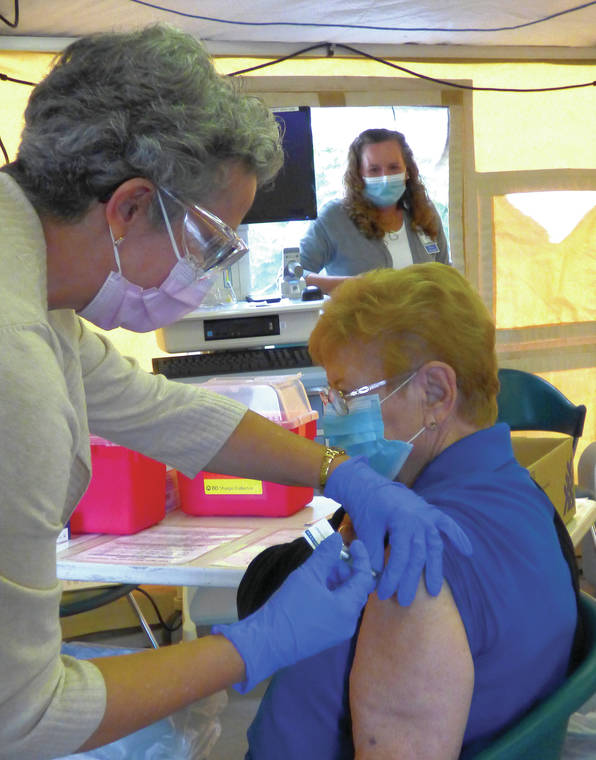There are four major ways the state Department of Health is working to get COVID-19 vaccines out to the public, state Health Director Dr. Elizabeth Char told lawmakers last week during a joint informational briefing with the House Committee on Pandemic and Disaster Preparedness and the state Senate Committee on Health.
The first is through long-term care facilities, via a federal partnership with CVS and Walgreens.
According to Char, who addressed the committees on Jan. 26, vaccines also are being distributed at smaller community care homes through partnerships with independent pharmacies; through federally qualified health centers, which she said can reach high-risk populations that can be much more challenging for the DOH to access because of geographical isolation, cultural concerns or other reasons; and PODs, or points of dispensing, operated by health care providers and the DOH.
Some of those PODs are local hospitals, and some are being run by district health offices in every county, she said.
These efforts are underway simultaneously, Char said.
“I think people tend to hear about PODs and think that’s the only way that vaccine is going out,” she said. “The whole goal of this is to get vaccine to people where they live, where they are, where they’re willing to accept the vaccine so that we can be the most successful and provide some measure of equity from people who really need to get vaccinated.”
During an interview last week, Edward Mersereau, deputy director of the DOH Behavioral Health Administration, and Dr. Curtis Toma, medical director of state Department of Human Services’ Med-QUEST Division, spoke about efforts to provide in-home vaccinations for those in community care homes, which include adult residential care homes and community care foster homes.
The DOH and Med-QUEST Division have partnered with independent pharmacies across the state — ElixRx Pharmacy, 5 Minute Pharmacy, Foodland Pharmacy, KTA Pharmacy, Pharmacare Hawaii, The Queen’s Medical Center Pharmacy and Times Pharmacy — to ensure vaccinations for those living and working in those facilities.
Toma said there are more than 1,700 community care homes on Oahu, but East Hawaii has more than the other neighbor islands combined.
On Hawaii Island, there are more than 102 foster care homes — mostly in East Hawaii — and more than 20 adult residential care homes, he said. Adult resident care homes have, on average, five residents, and each foster home has an average of three residents.
According to Toma, KTA is trying to get as many families as possible to come into PODs but is going into the community care homes when necessary to administer vaccines.
“On a much smaller scale, KTA is doing what we’re doing on Oahu,” he said.
Mersereau said that as of last Wednesday, nearly 6,000 vaccines have been allocated and about 5,400 doses had been administered by the partnering pharmacies.
Acting state epidemiologist Dr. Sarah Kemble said last week that nearly 10,500 immunizations had been administered in Hawaii County as of Jan. 25.
About 58% of the state’s vaccine allocations are going to 44 hospitals and medical facilities across the islands, including federally qualified health centers; about 30% are going to more than 16 POD sites for mass vaccination clinics statewide; 10% are going to 1,700 residential community care homes; and another 10% are going to long-term care facilities, she said.
Kemble said there will, to some degree, always be a lag between the number of allocated doses, how many have been received and how many have been administered.
According to Kemble, the state has been allocated about 203,600 doses of the vaccine, has received nearly 171,000 of those, and administered more than 106,600 shots.
“The goal that we have is really to quickly, efficiently and equitably vaccinate as many Hawaii residents as possible in order to suppress the spread of COVID-19 and get the pandemic under control,” said Deputy Director of Health Resources Danette Wong Tomiyasu, who addressed the vaccine prioritization process.
Vaccine prioritization and allocation is required because the federal supply is limited, she said.
The state currently has a more centralized distribution model which is necessary to better manage the limited vaccine supplies as equitably as possible, Tomiyasu said, but the DOH continues working toward a decentralized model for vaccines.
Once the federal government can ensure enough doses and a stable supply, the state likely won’t have to maintain a “highly structured allocation and sub-prioritization process,” she said.
The state’s vaccination plan prioritizes distribution of vaccines in two phases.
The first phase has three components. Phase 1A includes health care personnel and long-term care facility residents, while Phase 1B includes frontline essential workers and adults older than 75.
Adults 65-74, people 16-64 with high-risk medical conditions, and essential workers not included in 1B can be vaccinated in Phase 1C.
Phase 2 will cover the rest of the population, which includes everyone 16 and older not included in previous categories.
Tomiyasu said Phases 1A and 1B are based on guidance from the U.S. Centers for Disease Control and Prevention and the CDC’s Advisory Committee on Immunization Practices, and further prioritization of frontline essential workers.
“Our ultimate goal is to vaccinate everyone who wants it,” she said. “Everyone’s turn will come. Although current supply is inadequate to meet the demand, the good news is that Hawaii has demonstrated the capacity to get doses in arms quickly and to administer more as they become available. And we’ll be able to ramp up vaccine administration rapidly as supply opens up.”
When asked about a timeline for vaccinations to be complete, Char said much depends on the allocations of the vaccine from the federal government.
If the state can secure more doses, Char said, everyone who wants to vaccinated could do so by August or September, but that could take longer at the current pace.






